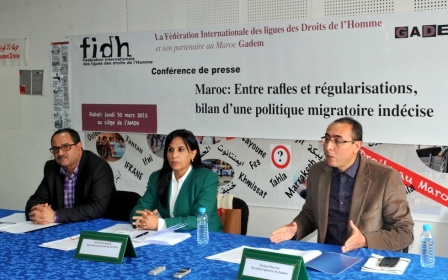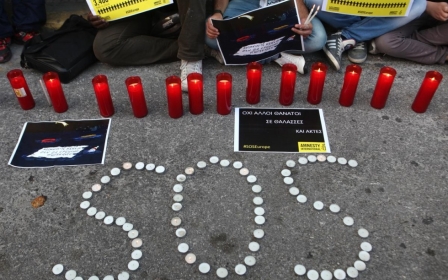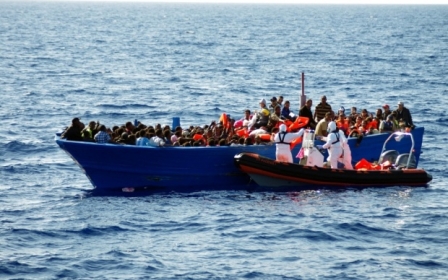Thousands rescued off Libyan coast as private rescue ship sets sail

More than 3,400 migrants were rescued at sea on Saturday, mainly off Libya, as Europe seeks ways to deal with the flood of people trying to reach its shores following a series of deadly shipwrecks.
A total of 3,427 people were picked up during an operation coordinated by the Italian coastguard.
While they said it was a "very busy day," it was not a record for the coastguard, which coordinated the rescue of 3,791 migrants on 12 April and another 2,850 the following day.
French patrol boat Commandant Birot, which was sent to boost EU patrols to deal with the influx of migrant boats in the Mediterranean, picked up 217 people off the coast of Libya also on Saturday.
The migrants - all men - had been on board three boats, the authorities said, adding that two suspected people smugglers were also caught and would be handed over to Italian police.
In Italy, the coastguard announced late at night that 16 vessels had rescued a total of 3,427 people on Saturday alone, in an operation coordinated from their headquarters in Rome.
In addition to the French patrol boat, the rescue operation mobilised four Italian coastguard ships, two Italian navy vessels, two cargo ships, two Italian customs ships and two tugs.
The Italian navy said on Twitter that the frigate Bersagliere had rescued 778 migrants, while the patrol boat Vega picked up another 675.
Some of the rescued migrants were expected to arrive overnight on the Italian island of Lampedusa, the closest to the African coast, while most of the others are expected to arrive in Sicily or southern Italy on Sunday night.
According to the Italian coastguard, the French patrol vessel should land its migrants at a port in Calabria.
Aid group launches rescue ship
Hundreds of migrants, mostly African but also many Syrians escaping the war at home, land every day on the Italian coast after being rescued by the Italian navy or coastguard.
Following a series of shipwrecks that killed more than 1,200 people in April, European leaders on 23 April agreed to strengthen the EU presence at sea in a bid to halt the tidal wave of refugees trying to reach Europe.
They decided to triple funding for the Triton operation, run by the Frontex border agency, whose previous budget was three million euros ($3.4 million) a month.
Triton was launched in November 2014 to supplant the more ambitious Italian Mare Nostrum ("Our Sea") rescue operation launched a year earlier, which enjoyed monthly funding of around $10mn.
The EU is also seeking UN support to combat the smugglers who thrive on the chaotic situation in Libya.
Possible intervention is complicated by the situation in the North African country, where two governments and parliaments are vying for power.
Humanitarian organisations are demanding a better reception for refugees fleeing war and stress, saying that even if the international community was able to close the Libyan route, another would open elsewhere.
Europe's only non-governmental rescue vessel set sail on Saturday from Malta on a six-month mission to reduce the number of migrant deaths in the Mediterranean.
The MV Phoenix, which last year saved 3,000 lives in just two months, will face an even tougher mission this year because of the spike in migrant crossings, said Martin Xuereb, director of the Migrant Offshore Aid Station (MOAS).
MOAS has teamed up with Medecins Sans Frontieres (MSF - Doctors without Borders) to operate the 40-metre vessel, which is equipped with a state-of-the-art drone that will be used to locate migrant vessels.
It is the only private ship engaged in the operation, although the coastguard regularly calls on passing freighters to rescue migrants when no other vessel is close by.
Middle East Eye propose une couverture et une analyse indépendantes et incomparables du Moyen-Orient, de l’Afrique du Nord et d’autres régions du monde. Pour en savoir plus sur la reprise de ce contenu et les frais qui s’appliquent, veuillez remplir ce formulaire [en anglais]. Pour en savoir plus sur MEE, cliquez ici [en anglais].





